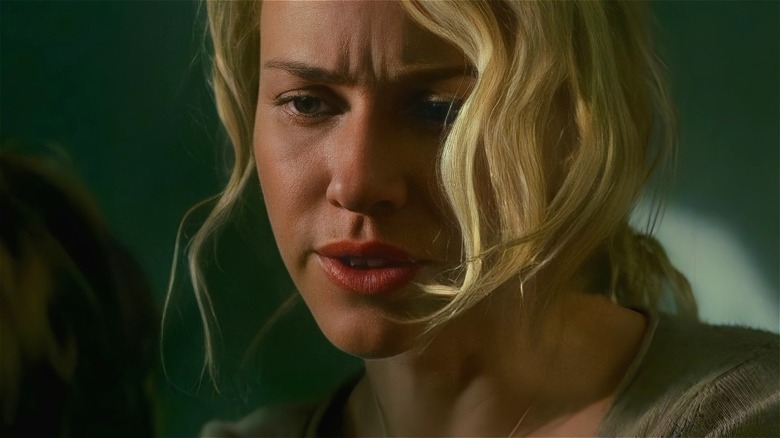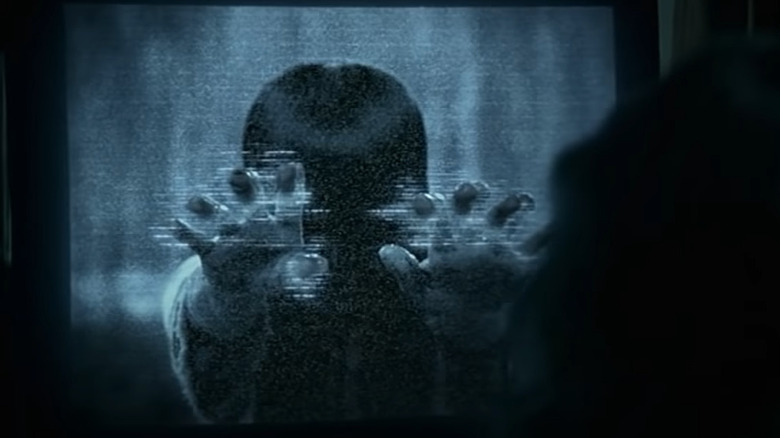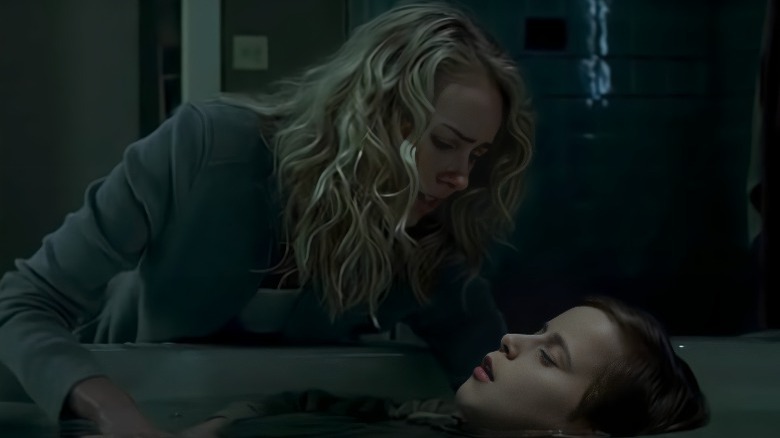The Ring 2: Which Scenes Were Changed In The Unrated Version And Why?
When "The Ring" was released back in 2002, it scared audiences senseless with its brutal death scenes and genuinely unsettling plot twists. While Gore Verbinski's film was itself a remake of the similarly themed Japanese horror film, "Ringu," bringing the concept to a larger audience and doing so with a bigger budget is a common one in Hollywood, a place where fresh new ideas can sometimes be scarce.
Naturally, though, when a newer idea does take off, the instinct is often to capitalize on its success. This is the case with "The Ring 2," the largely maligned sequel to the first film. While the team behind the sequel tried to capitalize on what worked in the original, the sophomore effort was largely despised by fans of the original, both professional and casual.
In fact, as with many disappointing horror films, an unrated version did very little to fix the problems with "The Ring 2." While the unrated cut added 18 cut minutes back in, making for a more complete and fluid film, there was very little that could be done to salvage the unnecessary and disappointing sequel.
Why is there an unrated version of The Ring Two?
As is often the case with films in popular horror franchises or horror films that producers think might appeal to younger audiences, "The Ring 2" was cut down to a PG-13 rating in hopes of upping its box office revenue. As such, most of the meaningful cuts to the sequel are meant to downplay or cut out bits of violence or disturbing content in order to garner that rating.
Though the cuts definitely take some of the impact out of key scenes like the opening where Jake (Ryan Merriman) is killed by Samara (Daveigh Chase) and a pivotal sequence that sees a herd of deer attack Rachel (Naomi Watts) and Aidan (David Dorfman), there are also several cutscenes and shaved off seconds that are far less important to the film.
There are other key moments that disappear completely from the theatrical cut as well, including a scene in the bathroom at the fair that sees Samara possess Aidan, a scene where poltergeist-like activity is seen in Rachel and Aidan's home, and scenes that flesh out the family's day to day life a bit more.
Regardless of how these changes affect the overall quality of "The Ring 2," it seems that they definitely paid off in terms of box office receipts. As such, the film managed to pull in over $160 million internationally, even in spite of the disastrous reviews that it received.
Why do unrated versions exist in the first place?
As pointed out above, cuts are generally made in situations like these to broaden the possible audience for a theatrical release. Whether bringing a film down from NC-17 to R or from PG-13 to PG, the idea is that doing so will offer more people the chance to see it and thus lead to more money being made by those who are hoping to make back their financial investment on the back end. However, studios have found a workaround for home releases that can also help physical and digital versions to sell better as well. Since an unrated version doesn't require the MPAA's approval in order to be released, it allows a film like "The Ring 2" to be largely restored to its original vision while offering audiences a chance for a slightly different experience.
From movies that are over two decades old, like "Requiem for a Dream," to films that were released in 2023, like "M3GAN," the trend shows no signs of slowing down. This is likely because it serves as a compromise that allows producers and financial partners for film productions to earn back their money but also, eventually, allows the film to be released as the director intended.


